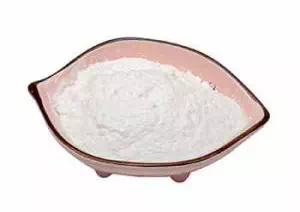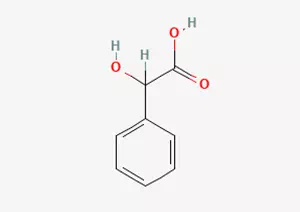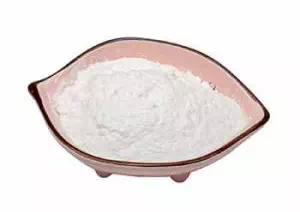All Categories



dl-mandelic acid CAS 90-64-2, dl-mandelic acid, CAS 90-64-2
Dl-mandelic acid, also known as mandelic acid or α -hydroxyphenylacetic acid in the field of chemistry. Judging from its appearance, it presents as a pure white and flawless crystalline powder.
CAS : 90-64-2
Formula : C8H8O3
Mol. wt. : 152.15
EINECS : 202-007-6
Chemical Name | DL-Mandelic Acid |
Other Name | Mandelic acid; (N)-Mandelic acid |
CAS | 90-64-2 |
EINECS | 202-007-6 |
Type | Food additives; Cosmetic raw materials; APIs; Organic raw materials |
Molecular Formula | C8H8O3 |
Molecular Weight | 152.15 |

Melting point | 119-121 °C (lit.) |
alpha | [α]D20 -0.5~+0.5° (c=2, H2O) |
Boiling point | 214.6°C (rough estimate) |
bulk density | 750kg/m3 |
density | 1.30 |
vapor pressure | 0.01 Pa (50 °C) |
refractive index | 1.4810 (estimate) |
storage temp. | Store below +30°C. |
solubility | 139g/l |
pka | 3.85(at 25℃) |
form | Crystals or Crystalline Powder |
color | White |
Dl-mandelic acid, also known as mandelic acid or α -hydroxyphenylacetic acid in the field of chemistry. Judging from its appearance, it presents as a pure white and flawless crystalline powder. Under specific temperature conditions, its melting point range is precisely defined between 118.0 and 121.0℃. It should be particularly noted that DL-mandelic acid has certain toxicity. When human skin comes into contact with it, it may trigger a series of adverse physiological reactions. And if it is accidentally ingested, it will cause serious harm to physical health.
However, unexpectedly, DL-mandelic acid, due to its powerful antibacterial effect, can be directly taken orally to treat urinary tract infections in certain specific circumstances, which to a certain extent reflects its unique value in the field of medicine.
It is worth mentioning that DL-mandelic acid has the special structural feature of chiral molecules, which enables it to play a crucial role in many fields and has already become an important chiral drug intermediate and fine chemical product. Its application value is very extensive. It can not only be ingeniously used in the synthesis of various drugs, such as the vasodilator cyclomannitate, which has a significant effect on improving the vascular-related functions of the human body; There is also the anti-inflammatory drug DL-hexamethylenetetramine mandelate specifically used for the treatment of urinary tract infections, which can play an important role in dealing with urinary tract infections. And antispasmodic drugs such as DL-benzyl mandelate have made significant contributions in alleviating spasmodic symptoms. Moreover, DL-mandelic acid also has the dual effects of a spermicide and trichomonas, and has corresponding applications in some specific scenarios.
From the perspective of market consumption, as early as 2012, the consumption of DL-mandelic acid in China reached approximately 250 tons. Furthermore, in terms of the current international market situation, the demand for DL-mandelic acid is in a stage of steady increase and is continuously growing at an average annual rate of about 10%. This fully demonstrates its high demand and broad development prospects in the international market.
Tracing back to the origin of mandelic acid, it was carefully extracted from peach leaves and willow leaves at the very beginning. It belongs to a lipophilic fruit acid and has the remarkable characteristics of high affinity with the skin and strong permeability. Compared with glycolic acid, its nature is milder. Because its chemical structure is similar to that of antibiotics, it can effectively inhibit the proliferation of many bacteria.
It is precisely because of its excellent lipophilicity and antibacterial properties that mandelic acid has also demonstrated unique advantages in skin care and other fields. It can precisely inhibit Propionibacterium acnes and at the same time improve the blockage of hair follicle sebaceous gland ducts. Not only that, mandelic acid also has a significant effect on improving pigmentation problems left over from photoaging and inflammation. In the actual clinical practice process, the combination of salicylic acid and mandelic acid has been widely used in skin peeling treatment, providing an effective treatment plan for solving many skin problems.

Mandelic acid, as an efficient skin care ingredient, has many significant benefits for the skin.
In terms of exfoliation, mandelic acid can be regarded as an excellent chemical exfoliator. It can act gently and effectively on the surface of the skin, precisely removing those accumulated aged and dead cells as well as the dirt that adheres to the skin on a daily basis. If these dead cells and dirt remain on the skin surface for a long time, it will not only make the skin look rough and dull, but also may clog pores and cause various skin problems. Mandelic acid, with its unique chemical properties, can penetrate between the surface cells of the skin, break down the connecting substances between cells, and promote the gradual shedding of aged keratinocytes, thus making the skin surface smoother and more delicate and laying a good foundation for subsequent skin care steps.
Cleaning pores is also one of the significant functions of mandelic acid. The products it makes have a strong penetrating ability and can reach deep into the pores. During the daily cleaning process, it can thoroughly clean out the dirt, oil and cosmetic residues hidden deep in the pores. Although no product can fully achieve the effect of closing pores at present, mandelic acid has made a unique contribution in this regard. It cleans the impurities in the pores, making the skin tissue around the pores tighter. This visually helps to hide the pores, giving the skin a more delicate and smooth appearance and reducing skin blemishes caused by enlarged pores.
In addition, mandelic acid can also stimulate cell renewal. When it removes the dead cells on the surface of the skin, it sends signals to the cells deep in the skin, initiating the mechanism of cell renewal and regeneration. This process of cell renewal is like injecting new vitality into the skin, promoting the continuous growth of new healthy cells and replacing aging cells. During this process, for problem skin prone to acne, the generation of new cells can improve the metabolic environment of the skin and reduce the occurrence of acne. At the same time, as cells are constantly renewed, the fine lines on the skin surface will gradually be smoothed out, which to a certain extent helps to blur the fine lines and make the skin look tighter and more elastic.
Finally, mandelic acid also has the effect of brightening the skin. When the skin completes the exfoliation process, its own ecosystem will gradually return to balance. The skin's luster, which was originally concealed by the aged stratum corneum, is restored, making the skin brighter and presenting a natural and radiant state. This brightening effect is not merely a temporary improvement on the surface, but rather a manifestation of a healthy luster starting from the bottom layer of the skin, making the overall complexion look better.
* Prompt reply and 24 hours online, professional team to provide best price and high quality product.
* Sample testing support.
* Every batch of products will be tested to ensureits quality.
*The packing also can be according the customers` requirment.
*Any inquiries will be replied within 24 hours.
*we provide Commerical Invoice, Packing List, Bill of loading, COA , Health certificate and Origin certificate. If your markets have any special requirements, let us know.